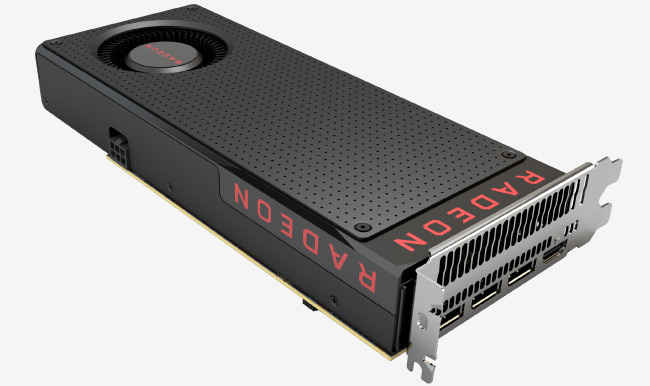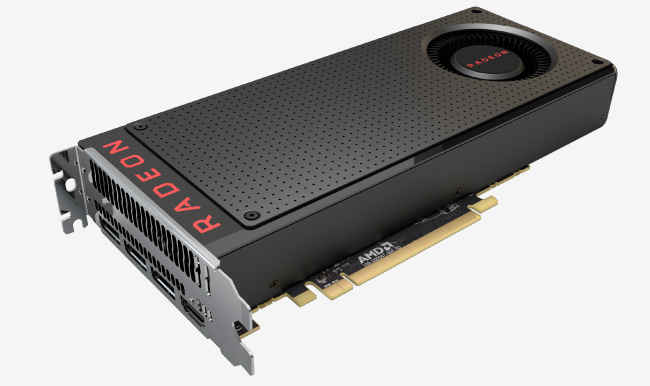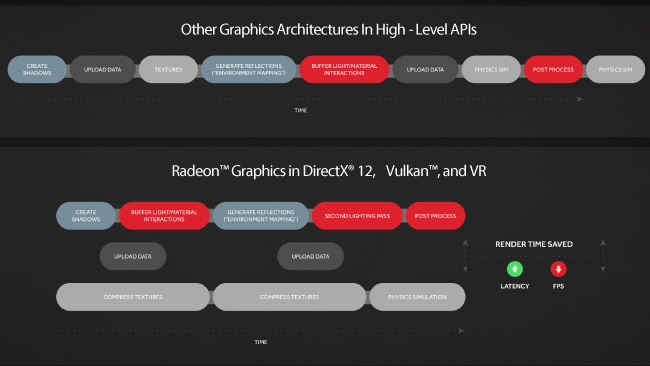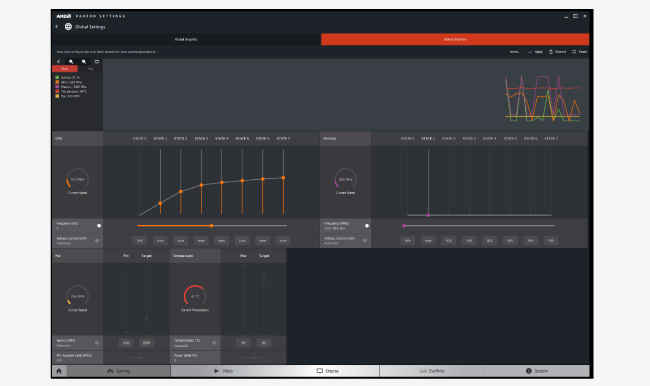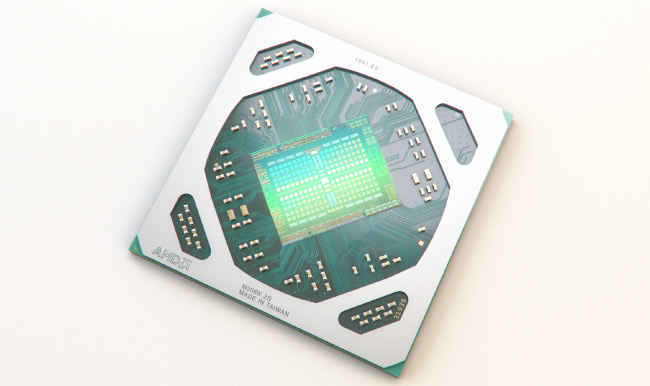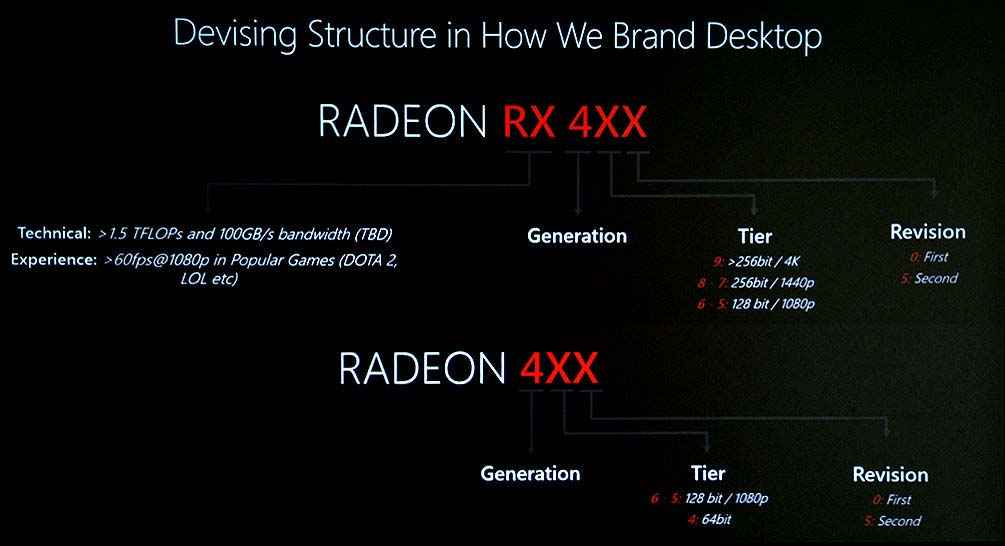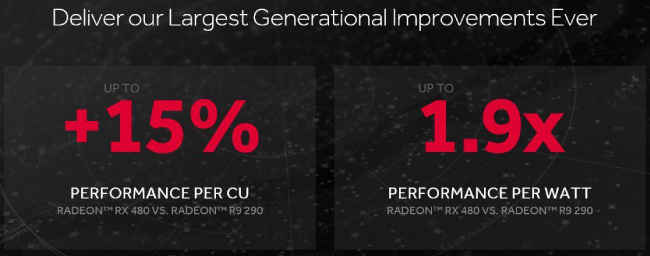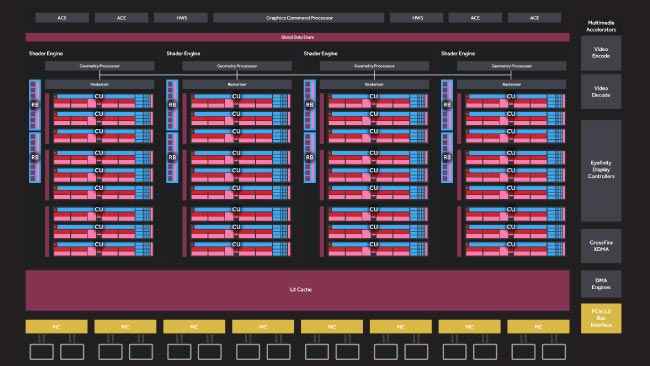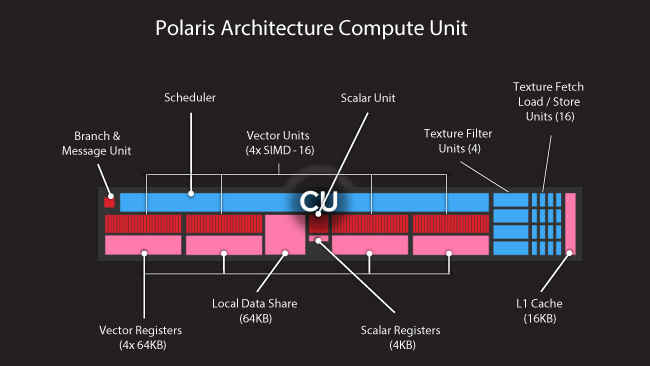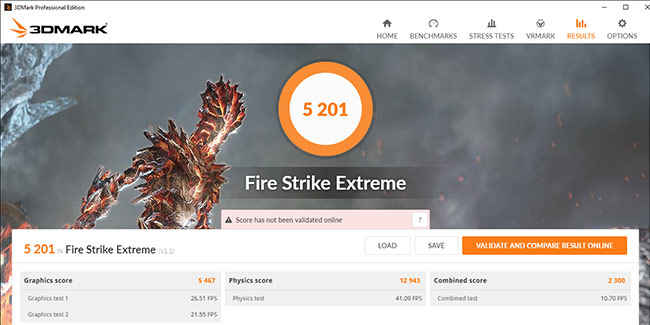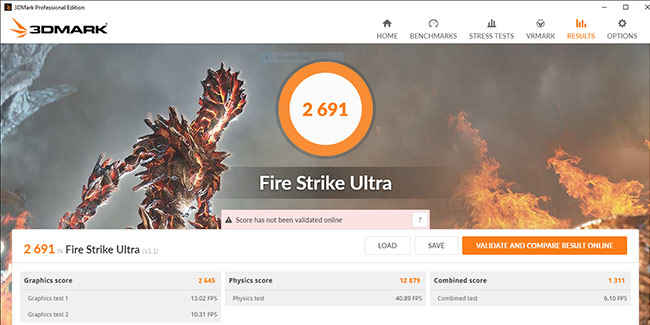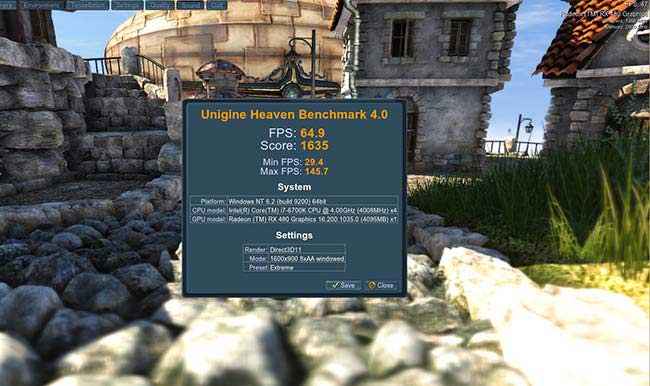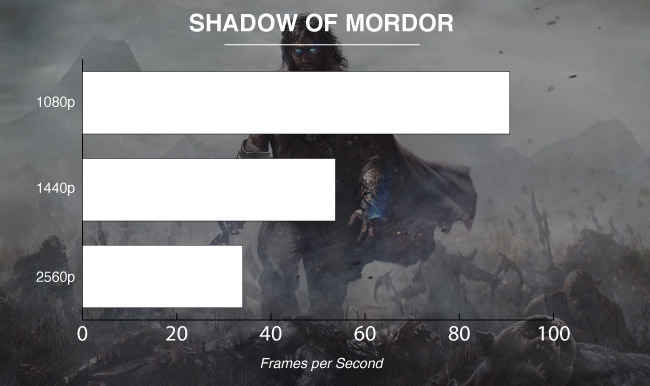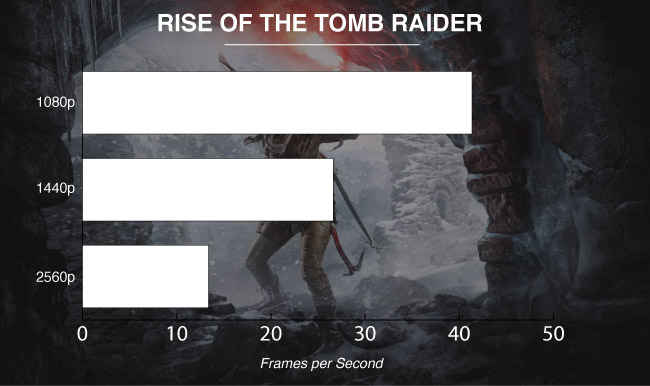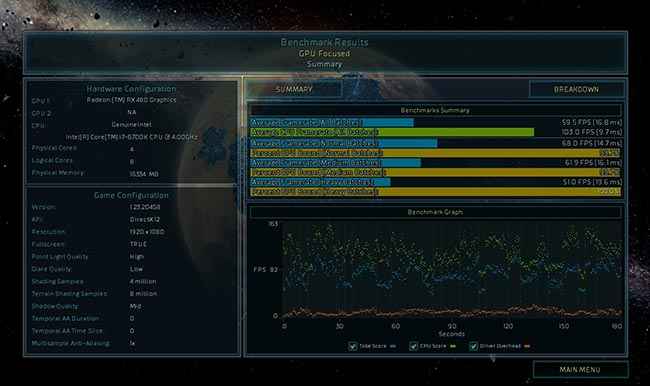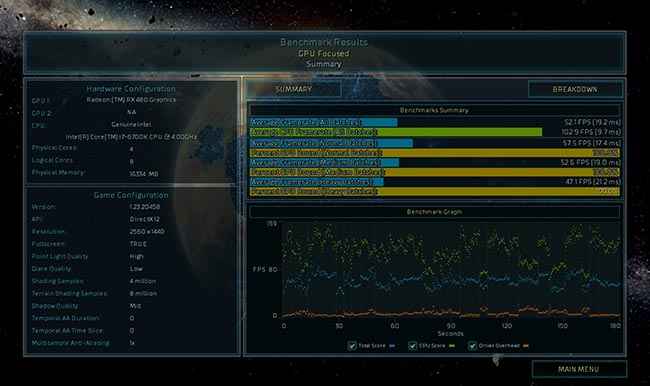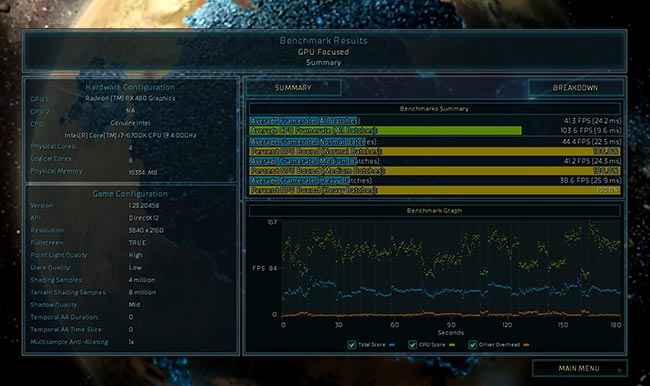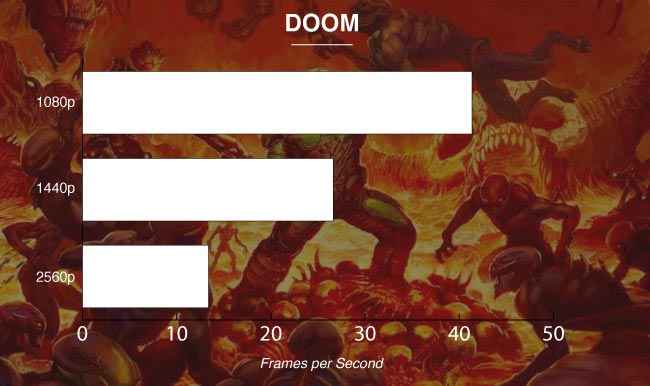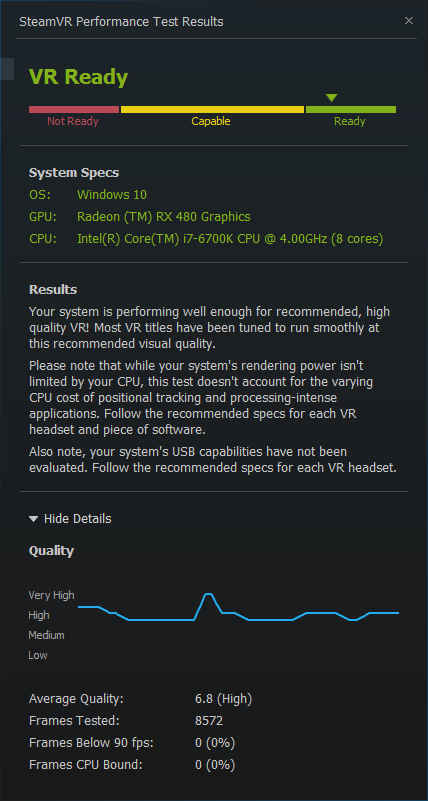AMD RX 480 Review Review : AMD has hit it out of the park with the RX 480
When it comes to 4K, the RX 480 needs a helping hand from another RX 480 and here’s where the AMD card has an advantage over NVIDIA
It’s not just the card
AMD’s Polaris launch isn’t just about the RX 480. It comes with a software refresh that aims to provide the consumer with a lot more value. The card itself aims to provide a price/performance and performance/watt ratio that has never been seen before. And that’s quite a tall claim given that NVIDIA also claims the same with the Pascal architecture. Both of which have moved to FinFET technology. AMD’s 14nm FinFET is reportedly getting better yields than NVIDIA’s 16nm FinFET, thus, putting Team Red in a much better position to cater to market demand. More on that later, here’s what AMD’s focusing on with the Polaris graphics architecture.
Democratising VR
Setting up a VR desktop machine isn’t a cheap task, especially given that the bare minimum configuration will run you somewhere around Rs.1.2 lakhs and a good portion of that cost was driven by the GPU. By launching the RX 480 – which can run VR headsets like the Oculus Rift and HTC Vive with ease – at $199, AMD aim’s to make VR more easier for the average gamer to set up. While this claim is true for the International markets, India is a different ball game. We’ve gleaned information from sources that peg the HTC Vive’s prices at around Rs.70,000 in India which is still an expensive proposition but with the GPU now costing much lesser than every other component, the VR dream is a lot more closer to reality than before.
Asynchronous Compute
This is the next big thing in compute and it plays a huge role in graphics as well. Asynchronous Compute is all about optimisation of work queues towards ensuring that your GPU is capable of crunching out more numbers simultaneously without having to wait for other tasks in the pipeline to finish. This increases the efficiency of the GPU tremendously.
Close to the Metal APIs
Mantle might not be around anymore but its direct descendant, Vulkan is turning out to be quite the attention grabber. The Polaris based RX 480 claims to offer better performance for games utilising Vulkan and DirectX 12 with fewer overheads. While Vulkan might not have a large library of games at the moment (Ashes of the Singularity, DOOM, Dota 2 & The Talos Principle) DirectX 12 is a different ball game altogether. With 14 games already released boasting of DirectX 12 support and even more on the way, the Polaris architecture is targeting a much broader library of games.
AMD WattMan
While you’d have experienced third-party vendors come up with tweaking software to control your graphics cards rarely would you have seen the level of control that AMD claims to provide with WattMan. WattMan is Overdrive in a new avatar with a lot more customisation options and the ability to monitor a lot more parameters of your GPU. With active participation from AMD for the software, WattMan has a lot more potential to evolve as the go-to software for AMD cards like MSI’s AfterBurner is for NVIDIA cards.
HDR, HBR and VR
With the aim of producing a GPU that will not only make VR within the reach of the average gamer, the RX 480 also aims to be more future-proof in terms of upcoming technologies which should achieve mainstream popularity in the coming years. We are talking about support for HDR displays which are currently only available in flagship televisions and monitors and HBR which is what DisplayPort 1.4 is capable of. HBR is simply High-Bandwidth Rate, ensuring that a lot more pixel data can be carried on from the graphics card to your monitor. This not only includes HDR but also support for resolutions so high which aren’t even available in the market yet.
About the GPU
The RX 480 is part of their Polaris line-up which includes the Polaris 10 and Polaris 11 GPUs. If you’ve been reading about Polaris for a while then these GPUs were known by the code names Ellesmere(Polaris 10) and Baffin(Polaris 11). As for the specifications of the three GPUs, we only know about the AMD RX 480 for now with only certain details about the RX 470 and RX 460 having been confirmed. Everything else is speculation including the rumoured RX 490 which is supposed to be a dual-GPU card featuring two RX 480 in internal CrossFireX with an 8 GB GDDR5 frame buffer, however, that seems unlikely.
Specifications
Here’s what the AMD RX 480 has to offer:
AMD RX 480 Specifications
| AMD RX 480 Specifications | |||
|---|---|---|---|
| RX 480 | RX 470 | RX 460 | |
| Stream Processors | 2304 | 2048 | 896 |
| Compute Units | 36 | 32 | 14 |
| Core Clock | 1120 MHz | 980 MHz ?? | 800 MHz ?? |
| Boost clock | 1266 MHz | 1050 MHz ?? | 900 MHz ?? |
| VRAM | 4 / 8 GB GDDR5 | 4 / 8 GB GDDR5 | 2 / 4 GB GDDR5 |
| TFLOPs | 5.8 | 5.1 | 2 |
| Memory clock | 7 Gbps (4GB) / 8 Gbps (8GB) | 7 Gbps | 5.5 Gbps |
| Memory bus width | 256-bit | 256-bit | 128-bit |
| Memory bandwidth (GB/s) | 224 (4GB) & 256 (8GB | 224 | 112 |
| TDP | 150 W | 110 W | 75 W |
| Transistors | 5.7b | 5.1b | 3.5b |
| Manufacturing process | 14nm FinFET | 14nm FinFET | 14nm FinFET |
| Power Connectors | 1x 6-PIN | 1x 6-PIN | None |
| Price | $199 / $239 | $150 ?? | $99 ?? |
AMD’s GPU architecture roadmap was recently leaked onto the Internet and it clearly shows that their VEGA flagship Polaris graphics card is scheduled to launch towards the end of this year. Featuring HBM2, AMD VEGA shows a lot of promise towards competing in the high-end segment which has been dominated by NVIDIA for quite a while.
Naming scheme
With a new architecture comes a new naming scheme. The RX 4XX naming scheme isn’t difficult to understand and the image below should be self explanatory.
To start off, the RX in the branding is reserved for the better performing GPUs like the RX 460, RX 470 and the RX 480. Entry-level GPUs will not sport the RX branding. Essentially, any RX card will offer more than 1.5 TFLOPs of compute performance and a bandwidth of at least 100 GB/s. According to AMD, cards that fit these criteria will be able to run popular eSports titles like Dota 2 and League of Legends with more than 60 FPS.
Now comes the numbers. The new naming scheme has a 3 digit format in which the first digit stands for the generation – which is 4 in this case – and the second digit indicates the performance tier. The performance tier roughly translates to what maximum resolution the card aims to run fluidly. So the RX 480 is aimed at 1440p gaming with memory bus width of 256-bit. Similarly, the rumoured RX 490 will be aimed at 4K gaming. This second digit ranges between 4 to 9. And lastly, we have the third digit that indicated the architecture revision and this can be either 0 or 5. All graphics cards featuring the first iteration of Polaris will be sporting a ‘0’ for the third digit. Next year onwards, we should see the second revision which will have a ‘5’ instead of the ‘0’. So a RX 485 will not be a dual-GPU card as some have assumed, rather it will be the next iteration of the Polaris architecture that will replace the RX 480. This new naming scheme has provision for listing 16 models (8 per revision).
Architecture
We’ve already written quite a bit about the new Polaris architecture and you can read it over here. So we’ll stick to just the highlights in the review. Power consumption has long been the bane of graphics card. PCIe power connectors support a maximum of 300 W officially using a 6-Pin + 8-Pin configuration (some manufacturers have used 2x 8-Pin to obtain 375 W) so the power ceiling exists and will continue to do so till PCI-SIG ratifies the next PCIe standard. So you have no choice but to improve the performance/watt factor and that’s where both AMD and NVIDIA are headed.
Which brings us to the 14nm FinFET process. AMD jumped directly from the 28nm transistors to the 14nm transistors after quite a long while and this has resulted in quite a lot of gains on the power-efficiency front. However, there’s still the problem of scaling as increasing the number of Compute Units increases the power consumption linearly and increasing the clock frequency jacks up power consumption cubically. Example – Increasing frequency by 15% increases power consumption by 52%. This is why GPUs are clocked low and compute units are increased. Moving to the 14nm FinFET effectively resulted in reportedly 15% increased performance per Compute Unit and 1.9 times the performance per watt. This is with reference to the RX 480 being compared against the Radeon R9 290.
The RX 480 has 4 Shader Engines consisting of compute units (CUs) with each Shader Engine containing exactly 9 CUs. Each CU, in turn, houses 1 Geometry processor, 4 texture units and 64 Stream Processors which brings the total to 2304 Stream Processors and 144 Texture units. Add 32 ROPs and you’ve got a brief overview of the RX 480 GPU. But that’s not it, there are 4 Asynchronous Compute Engines and 2 Hardware Schedulers as well. The former, being a bigger piece of the pie.
Coming to the memory part, there are going to be two variants of the RX 480, one with 4 GB VRAM and another with 8 GB of VRAM. The eight 32-bit memory controllers come together to form a 256-bit wide data bus that can support 8 GB of memory with ease. Now let’s take a closer look at an individual Compute Unit.
A Compute Unit is the fundamental unit in AMD’s GCN architecture and the core structure has remained more or less unchanged. There are 4 vector units, each of which is a 16-wide SIMD with a 64 KB register and 1 scalar unit with a 4 KB register. Essentially, this CU can handle 4 instructions at once. The Branch and Message Unit at the very beginning is what fetches and decodes instructions that are later scheduled for processing. And at the end you have Texture Fetch Load/Store Units to hold the texture files that are needed for whichever instruction is awaiting processing in the pipeline. A change that we noted was that the scalar unit has a 4 KB register in GCN 4 while GCN 1 had an 8 KB register. Maybe, there simply isn’t enough use for that much memory as most operations executed by the GPU are vector and the scalar unit only served to handle those once-in-a-blue-moon independent calculations.
Improvements include improved prefetch efficiency to reduce instruction pipeline stalls, increased buffer size for each instruction, grouping of cache requests and native FP16 / INT16 support.
Performance
Let’s see how the RX 480 compares with the competition.
Synthetic Benchmarks
We started off with 3DMark managing to score 10511 in Fire Strike, 5201 in Fire Strike Extreme and 2691 in Fire Strike Ultra. We ran these benchmarks with each driver update with the highest scores being obtained with the 16.7.2 update with the latest 3DMark 2.1.2852. While 3DMark does its best to ensure scores are consistent across software versions, the newer AMD drivers certainly did their part in improving scores.
Unigine Heaven 4.0 scored 1635 with the RX 480 which is quite close to the GTX 970 and definitely better than the GTX 960. We’ll know how this compares to the GTX 960 in a few days. It is rumoured to be quite close as well.
Game Benchmarks
First up was Shadow of Mordor. While the game is a bit old it still manages to tax graphics cards while running at 4K resolutions and that is exactly the case here. The game’s internal benchmark runs effortlessly at 1080p but cranking it up to 1440p brings the FPS below the 60 FPS threshold and 4K takes it down even further. However, the game is playable at 4K with very few high-NPC scenarios actually causing the FPS scores to drop below playable levels.
Rise of the Tomb Raider
On the other hand, Rise of the Tomb Raider was a completely different scenario. Using our extreme preset even at 1080p the game ran a little below 60 FPS. Needless to say, 1440p and 4K was even lower with the game managing roughly 13 FPS on average. We are quite eager to see how well the game performs with two RX 480 in CrossFireX. Having a closer look at the frame times, it seems that out of the tree sequences, the first two run quite smoothly. However, the third sequence ended up running a bit jittery.
Ashes of the Singularity
Being one of the few games to properly implement asynchronous compute, Ashes of the Singularity not only makes good use of upcoming graphics technologies but also scales really well with CrossFireX and SLI. We haven’t received two RX 480s yet so that’s something we’ll have to look at later on. Since the game is an RTS with a top-down isometric view, we found there to be very little difference in terms visual fidelity by switching between texture quality of the units.
Benchmarking DOOM was quite interesting, especially since we had the option of switching between OpenGL and Vulkan APIs. The game ran quite smoothly throughout the entire benchmark sequence on either APIs at 4K. The only place we saw a bit of delay was while panning across wide open spaces with lots of objects far in the background. However, the complete eye-opener was the performance difference between the two APIs. Running the benchmarks with Vulkan resulted in a tremendous performance increase. Throughout the benchmark across all three resolutions, we saw an increment of approximately 35%. Since Vulkan is heavily based on AMD’s Mantle, this makes us wonder how Mantle would have performed had it been adopted by the industry widely.
Verdict – AMD RX 480
AMD has truly hit it out of the park with Polaris. The new architecture coupled with the transition to 14nm FinFET has resulted in profound power savings and performance increase. The card at launch did draw an excess amount of power from the PCIe slot instead of the power connectors but that was resolved in driver version 16.7.1 and there has been a good amount of performance increment with Vulkan as well.
The only factor that throws a spanner in the gears is that of pricing. While it may be $199 in overseas markets, there are countries like India and Australia where the FOB isn’t the same as overseas markets. Resulting in a price gain, add to that a convoluted distribution hierarchy and we have an even greater price rise. However, this affects both AMD and NVIDIA so the RX 480 and its projected counterpart, the GTX 1060, are both going to be in the same price bracket in India. Both of these cards are meant to be the sweet spot cards which till now used to be the most favoured price bracket for gaming enthusiasts. But that’s going to change, at least for India. The upcoming RX 470 and the GTX 1050 (whenever it launches) will be the new sweet spots for a while till prices fall for both cards.
The RX 480 is a great card, it runs almost all current gen AAA titles at 1080p at max with no issues. Even 1440p isn’t that taxing, and if you know which settings to tweak then you’ll enjoy 1440p gaming with no visual difference than 1080p. However, when it comes to 4K, the RX 480 needs a helping hand from another RX 480 and here’s where the AMD card has an advantage over NVIDIA. The competing card being the GTX 1060, NVIDIA has taken away SLI capability and that was a wrong move for a price conscious market like India. If at all, one year down the line a gamer wants to add more firepower to his machine, he/she can simply slap on another RX 480 or in case they’re running a GTX 1060, then they’ll have to sell that one off and get a 1070. It’s no rocket science that AMD seems to be the more economically viable option.
Mithun Mohandas
Mithun Mohandas is an Indian technology journalist with 10 years of experience covering consumer technology. He is currently employed at Digit in the capacity of a Managing Editor. Mithun has a background in Computer Engineering and was an active member of the IEEE during his college days. He has a penchant for digging deep into unravelling what makes a device tick. If there's a transistor in it, Mithun's probably going to rip it apart till he finds it. At Digit, he covers processors, graphics cards, storage media, displays and networking devices aside from anything developer related. As an avid PC gamer, he prefers RTS and FPS titles, and can be quite competitive in a race to the finish line. He only gets consoles for the exclusives. He can be seen playing Valorant, World of Tanks, HITMAN and the occasional Age of Empires or being the voice behind hundreds of Digit videos. View Full Profile


